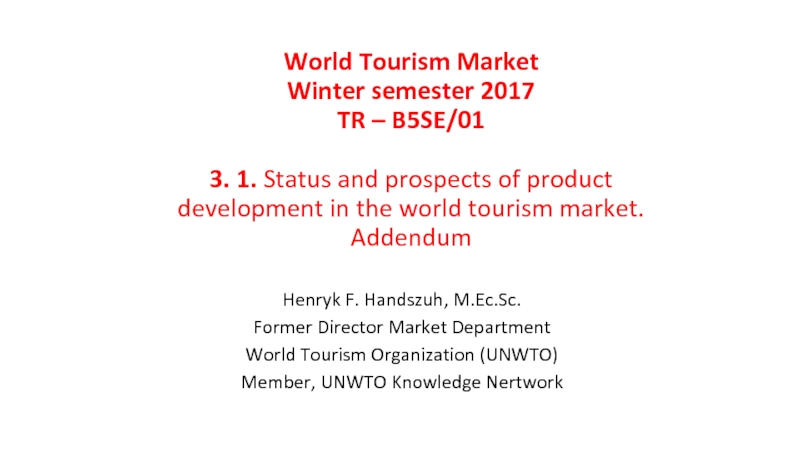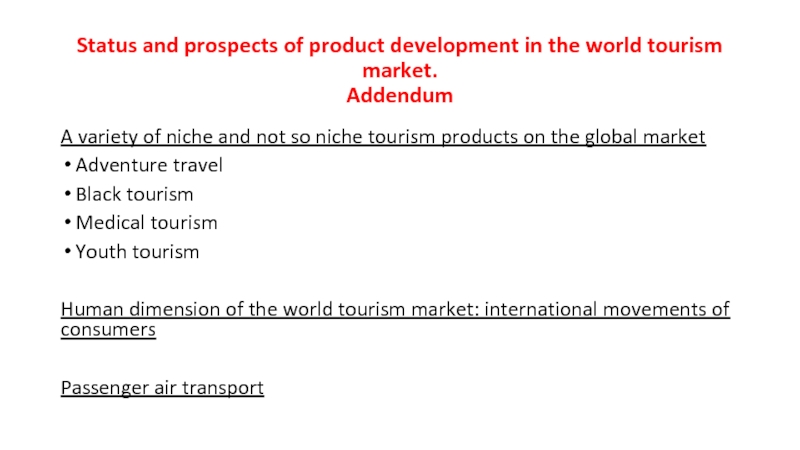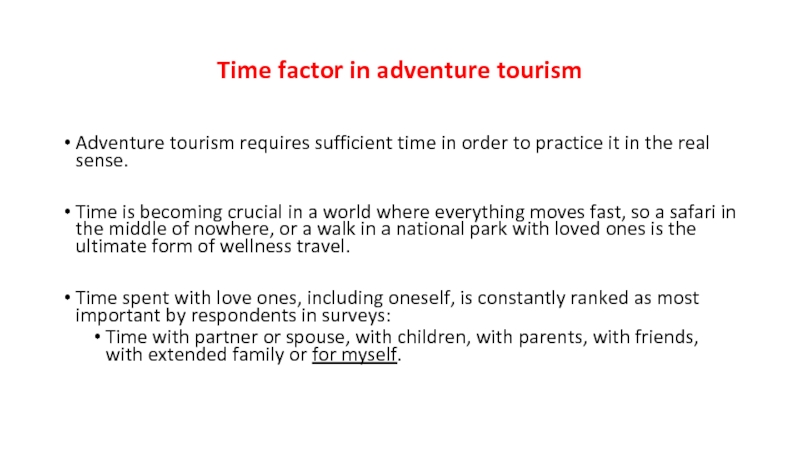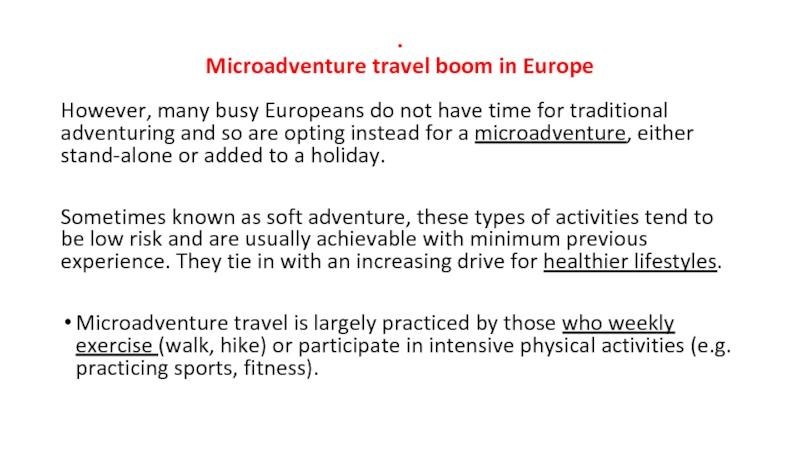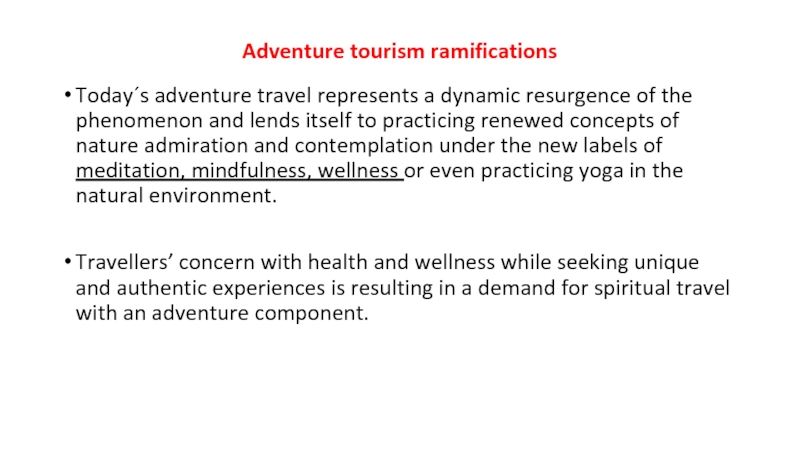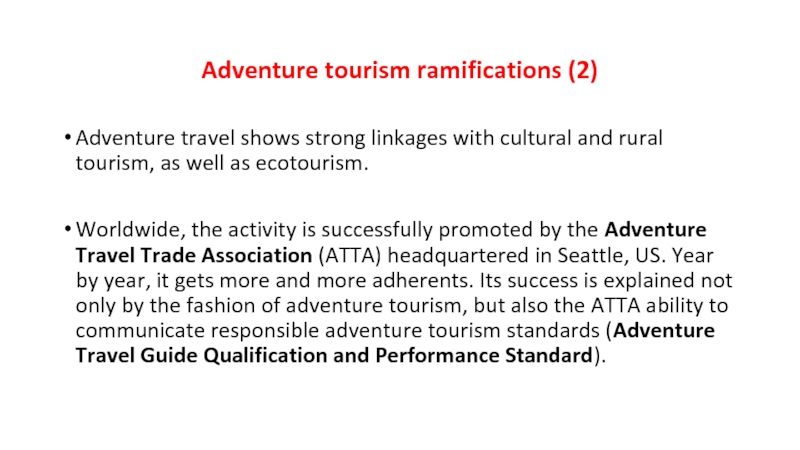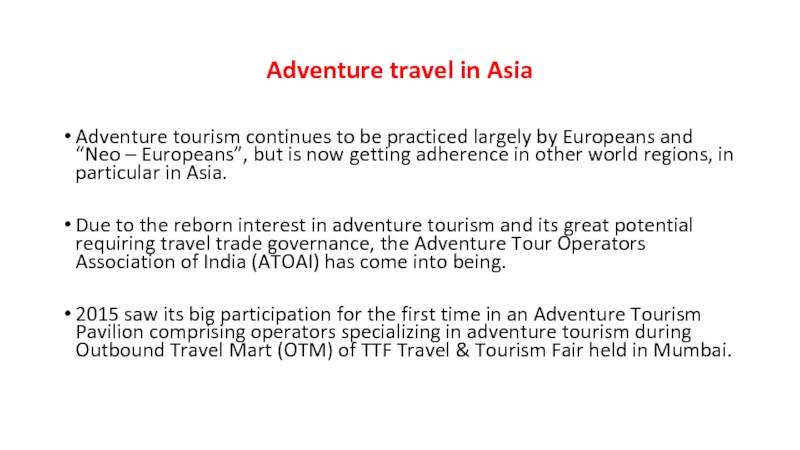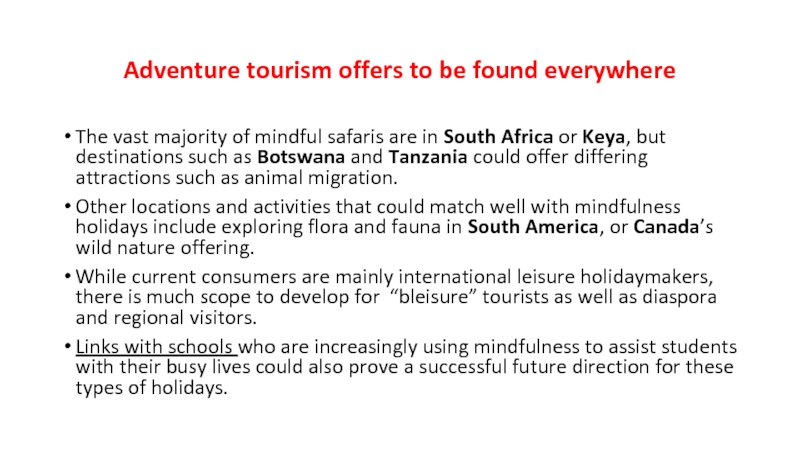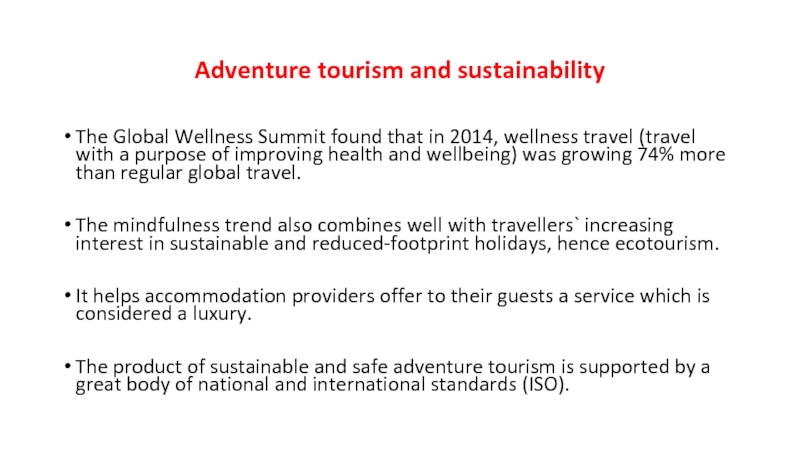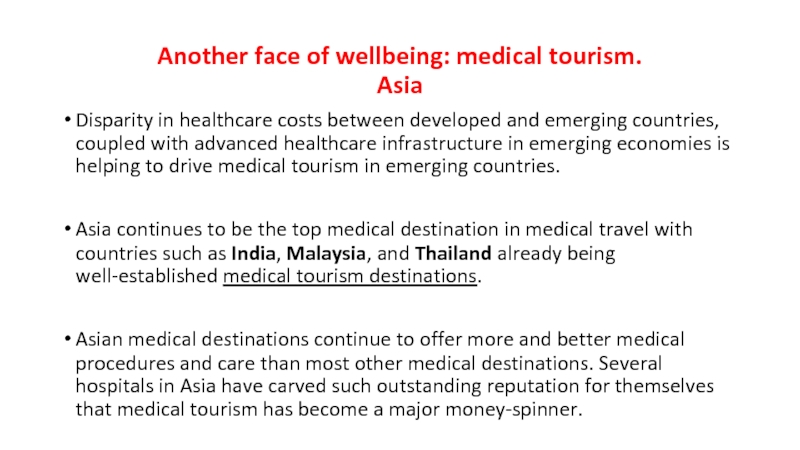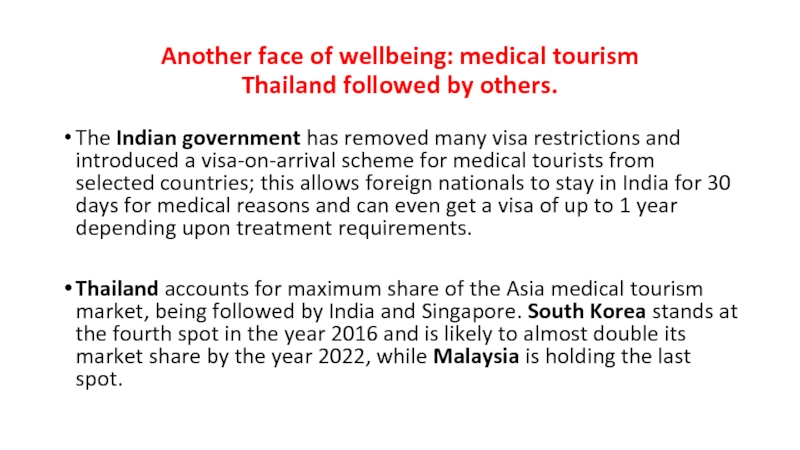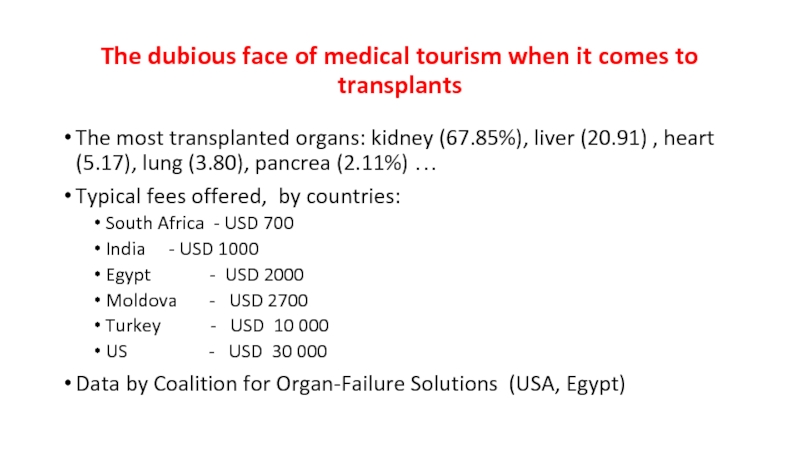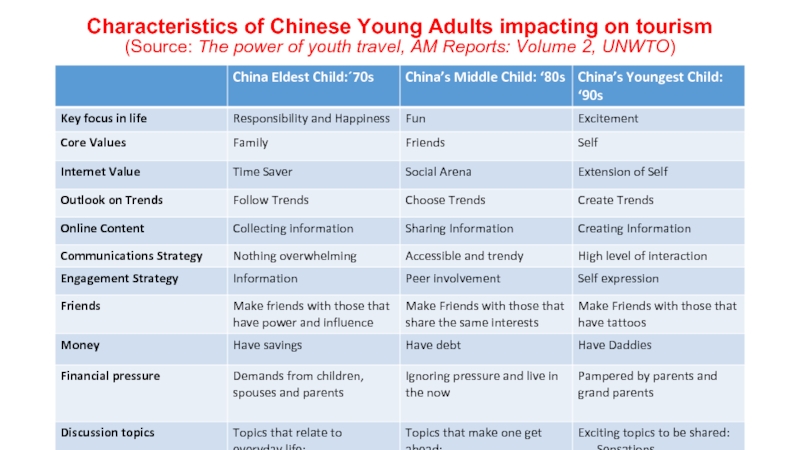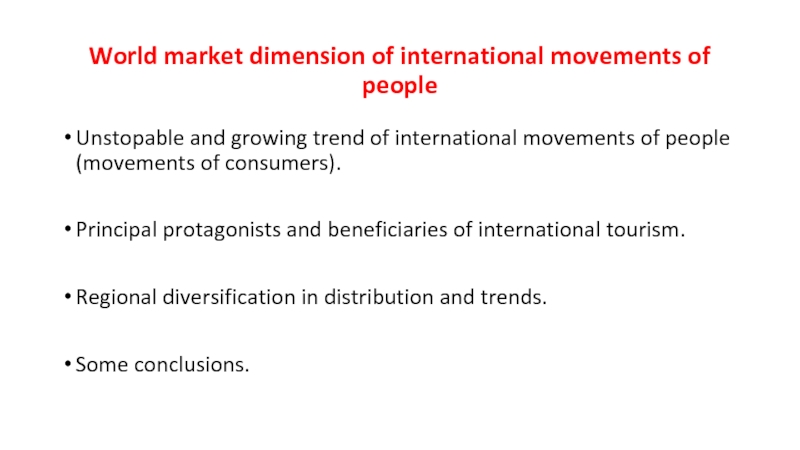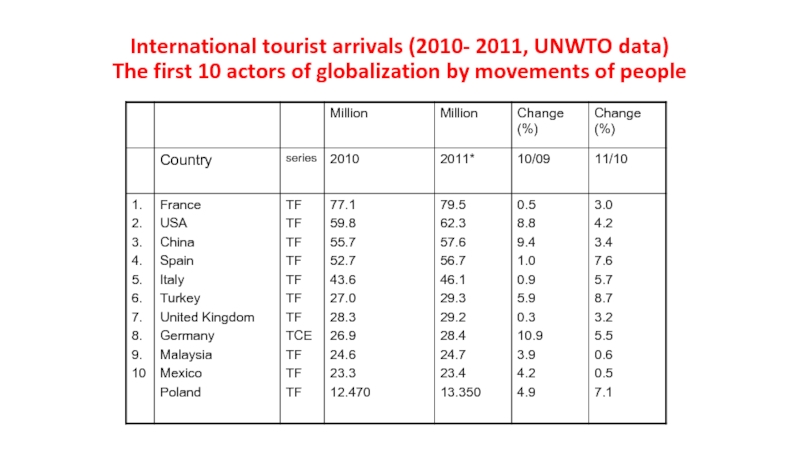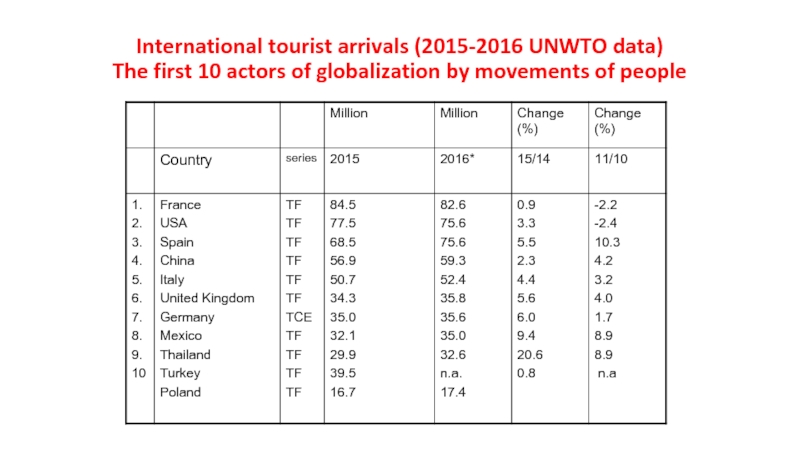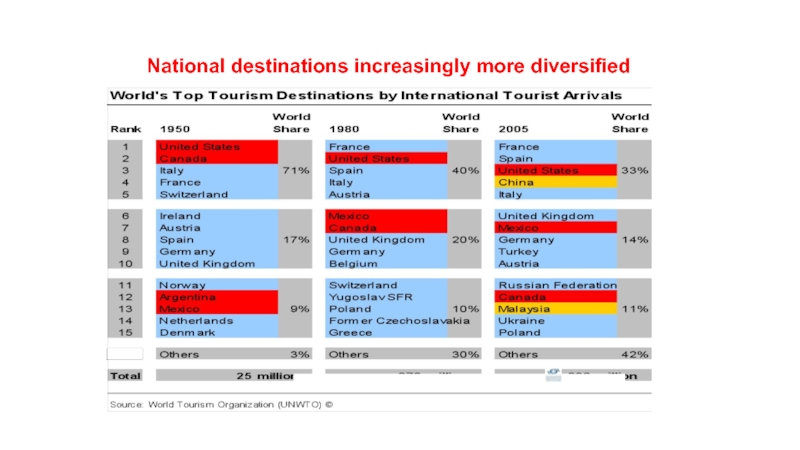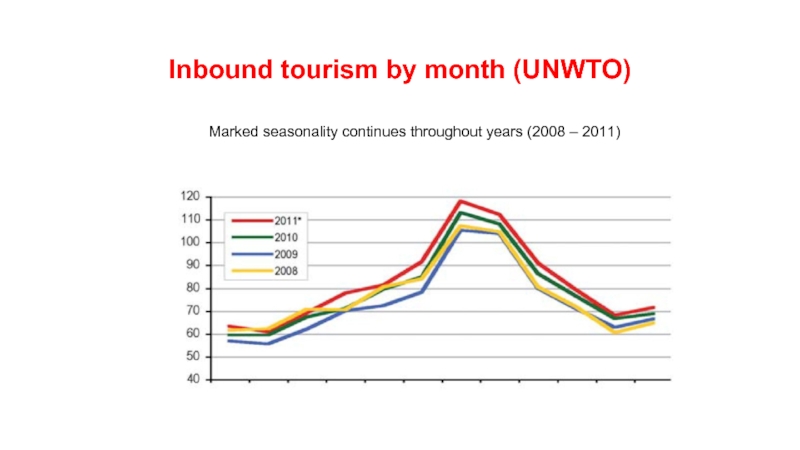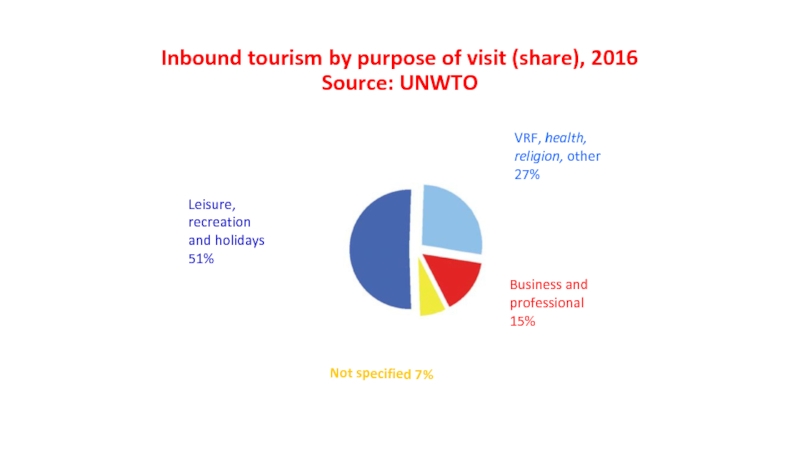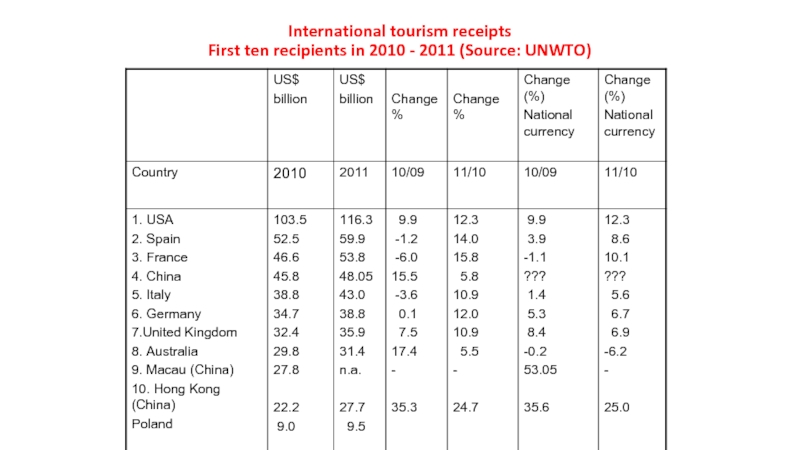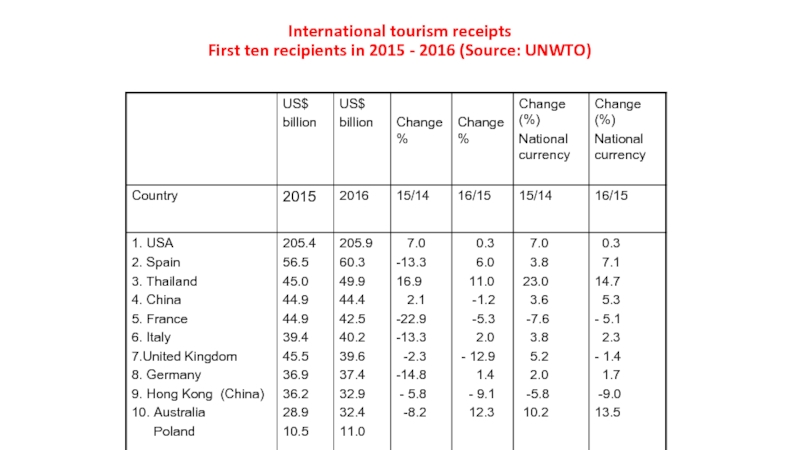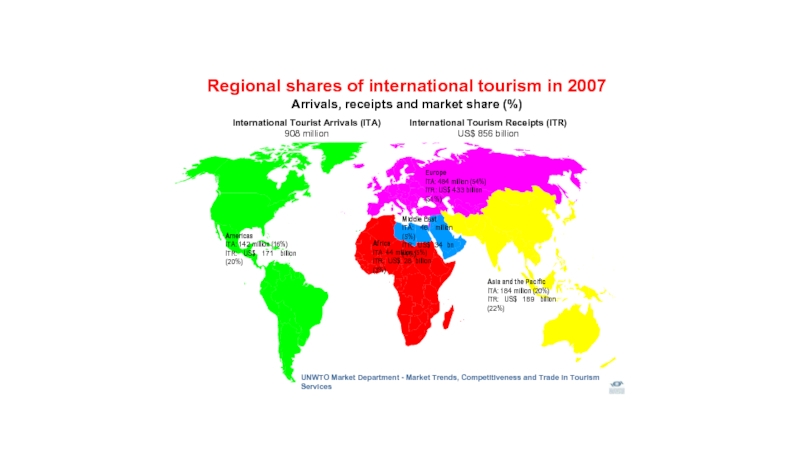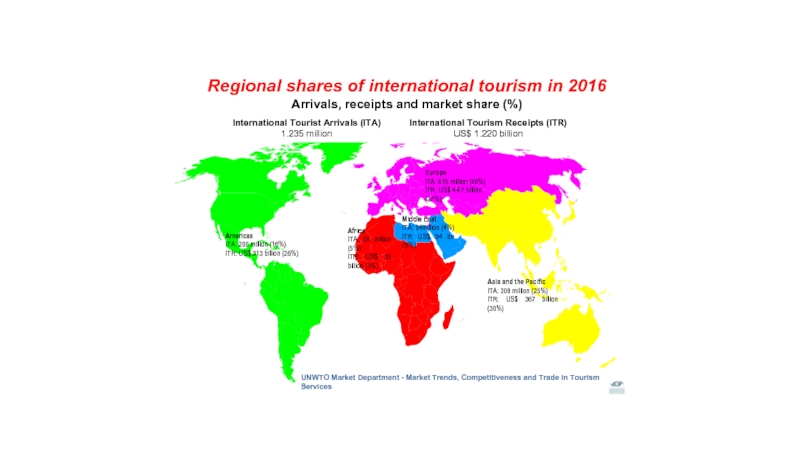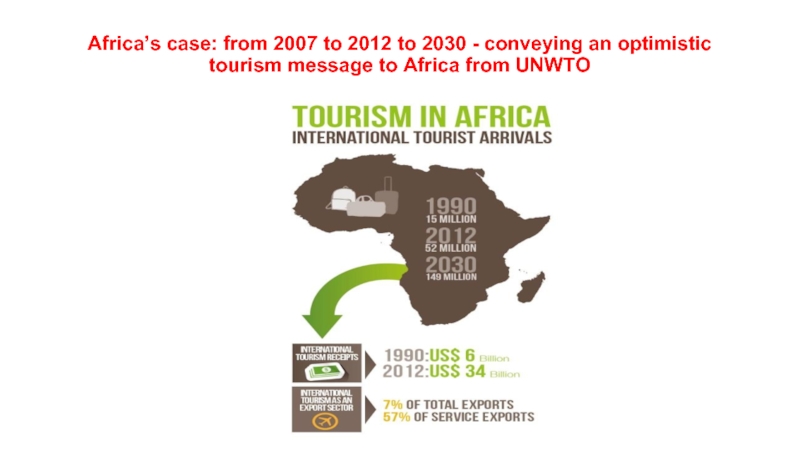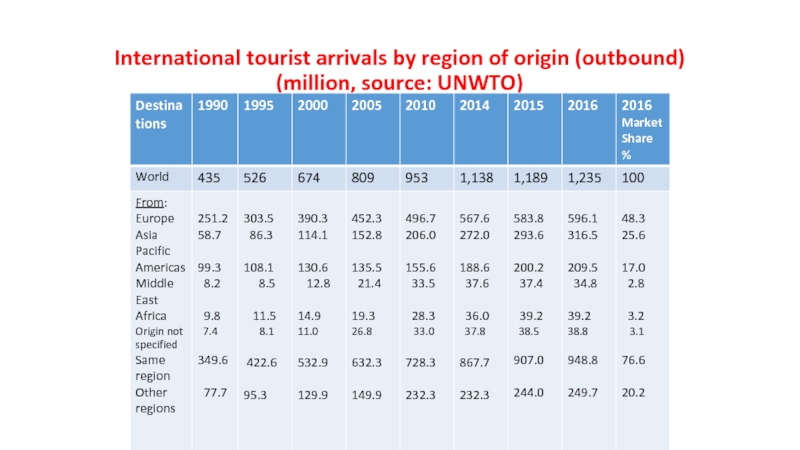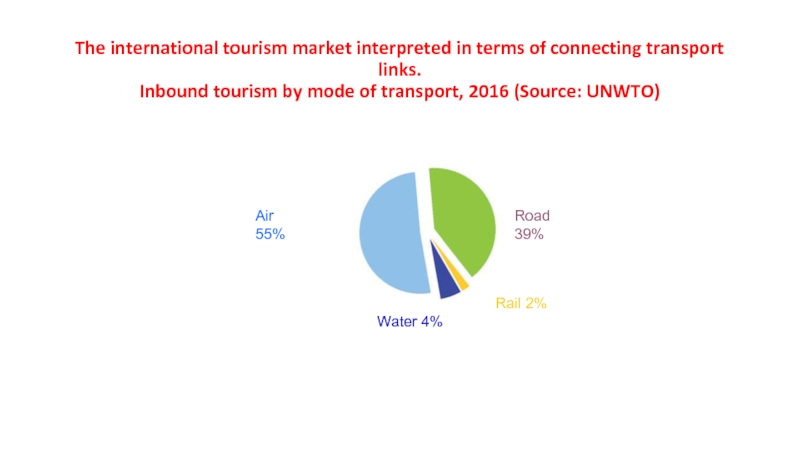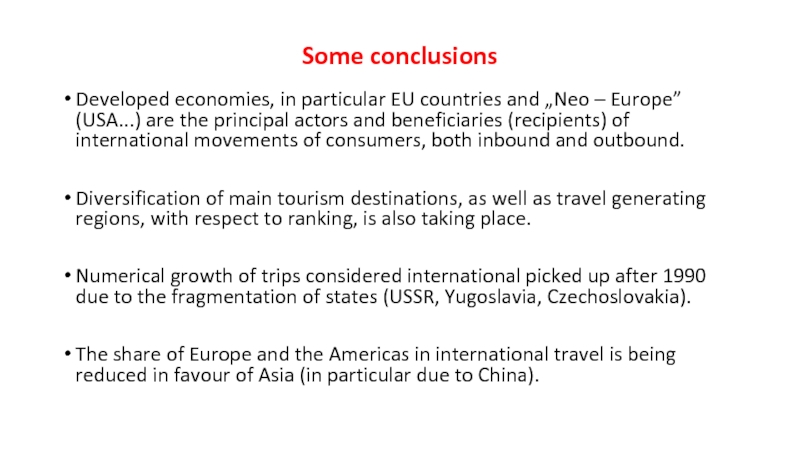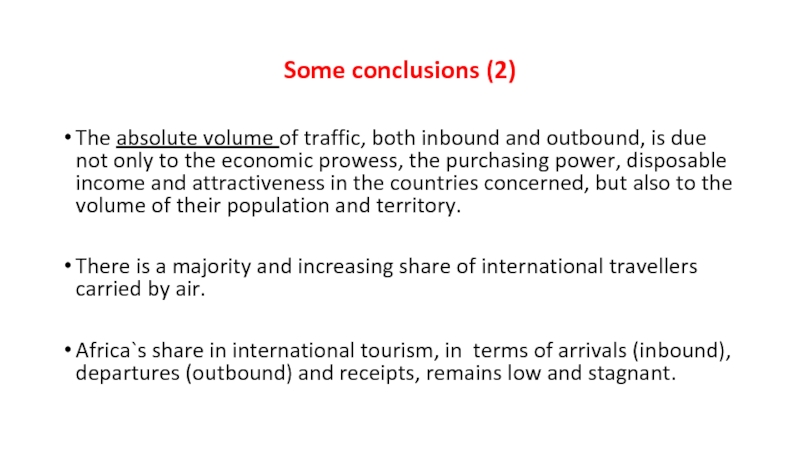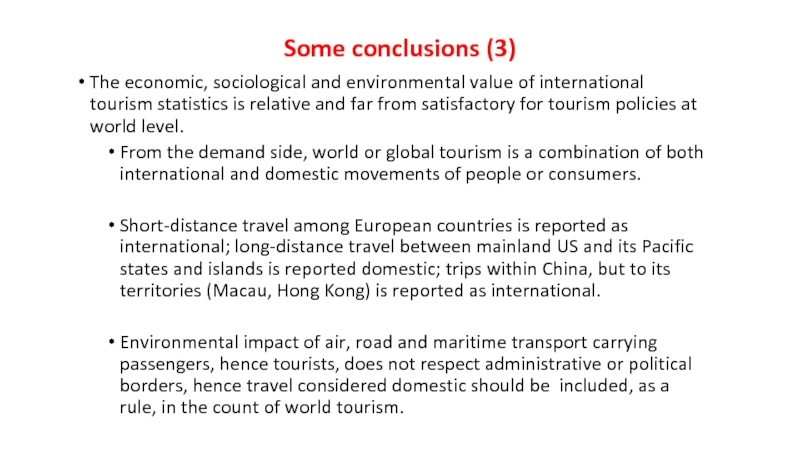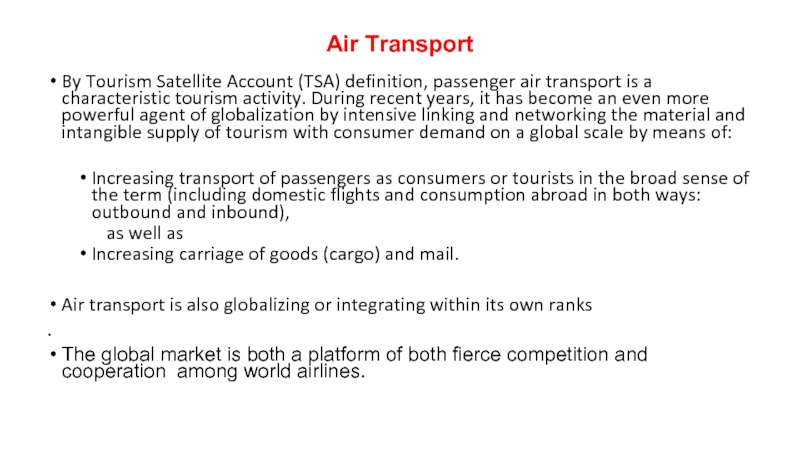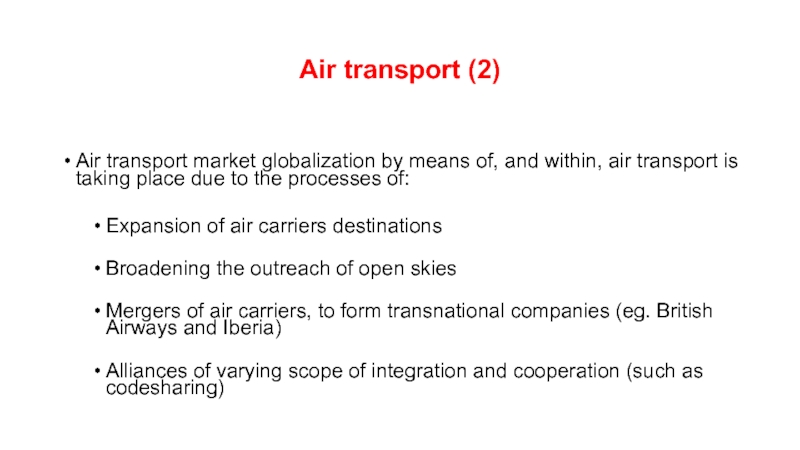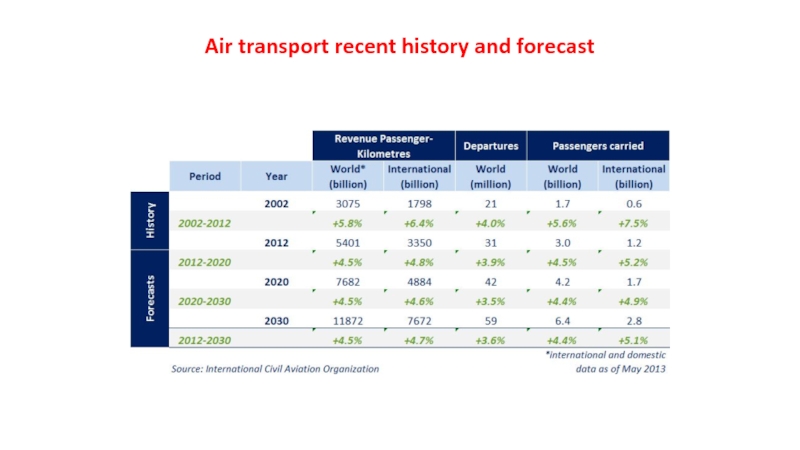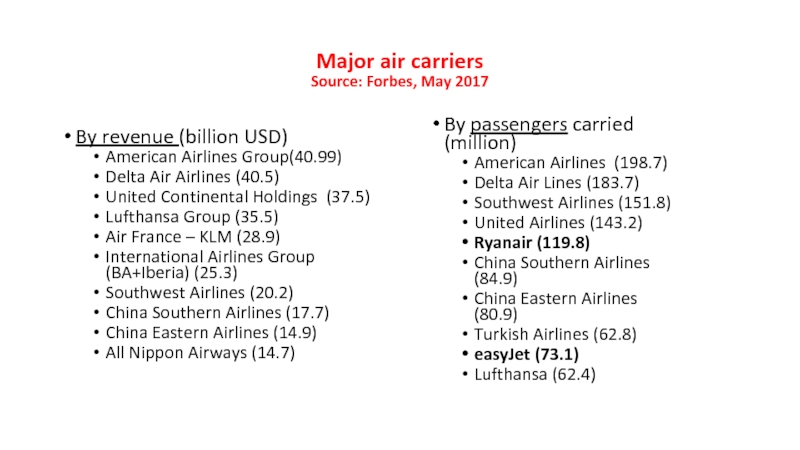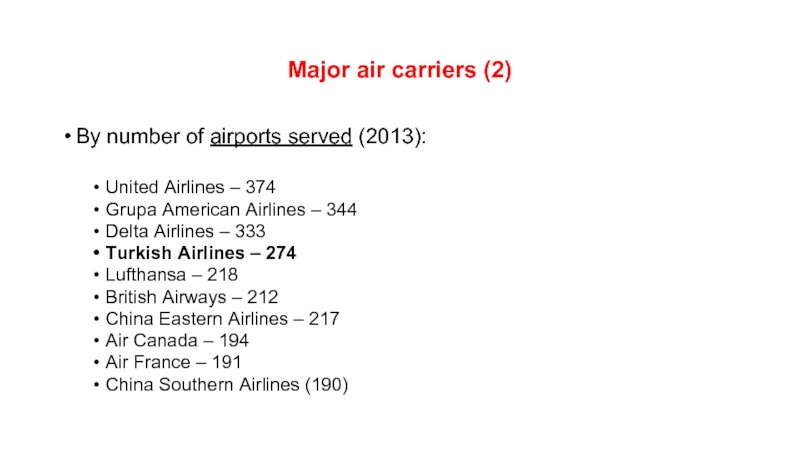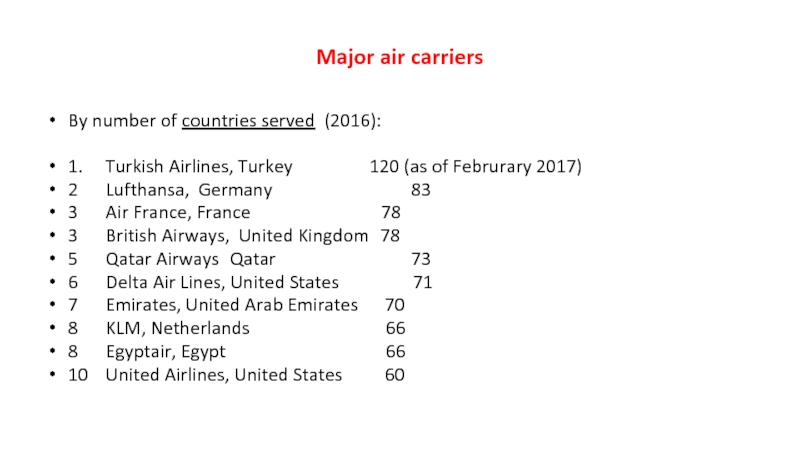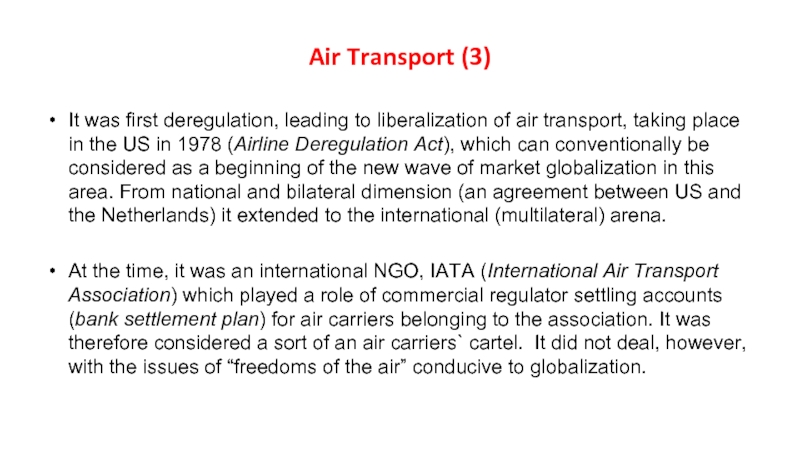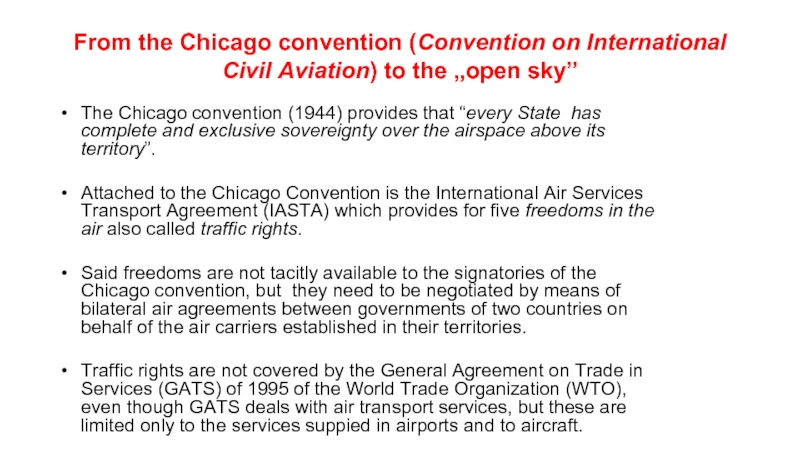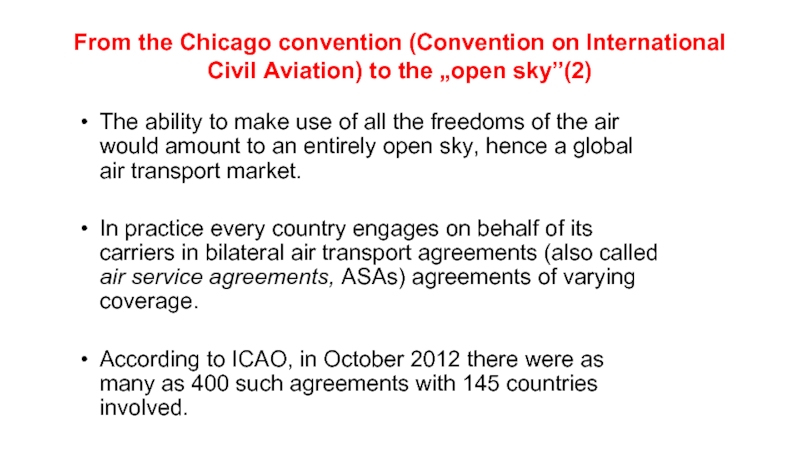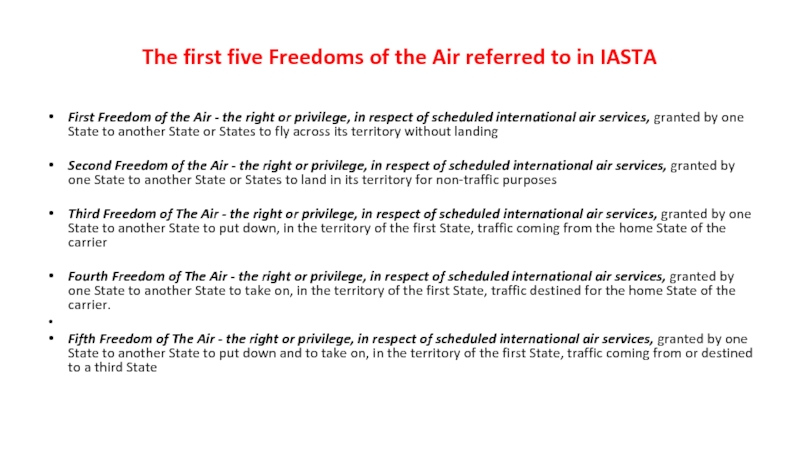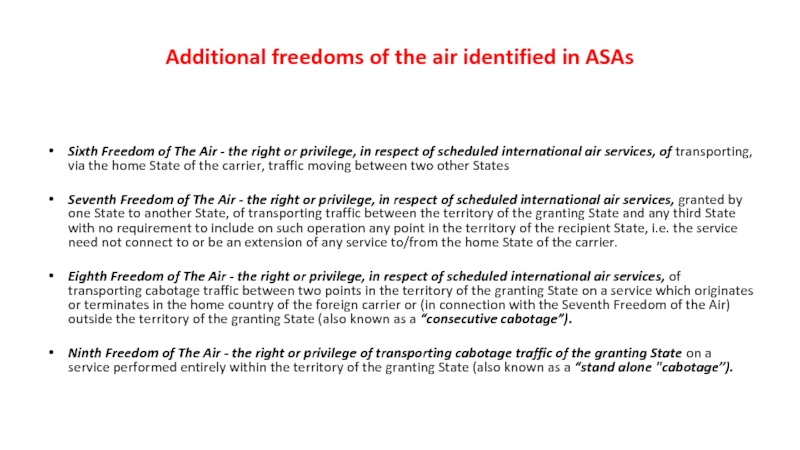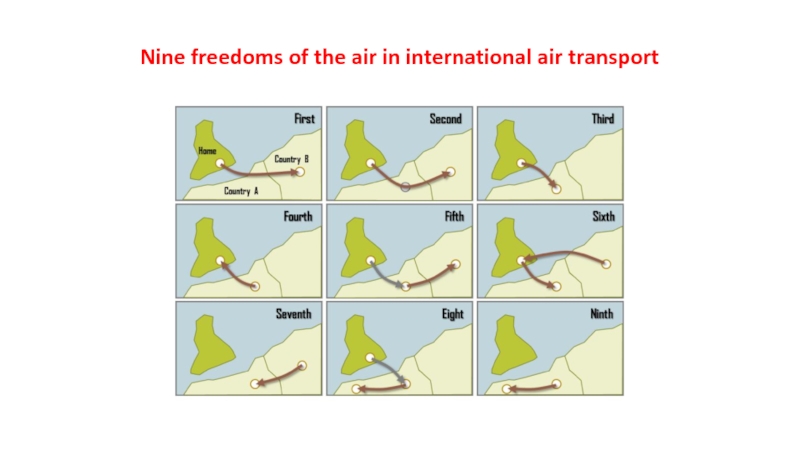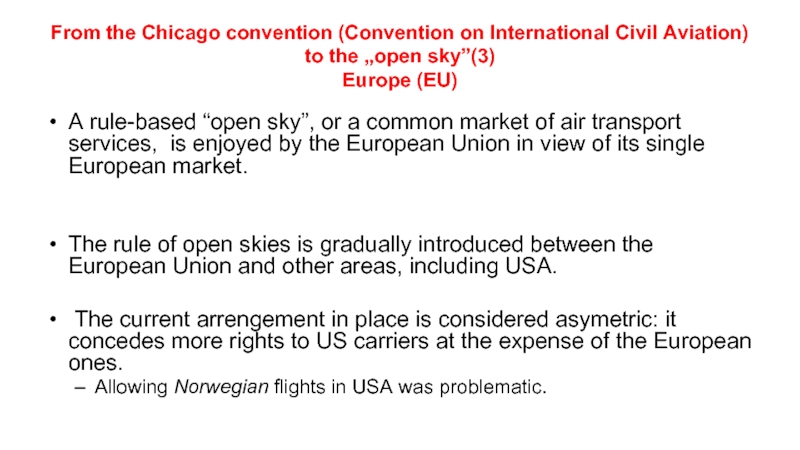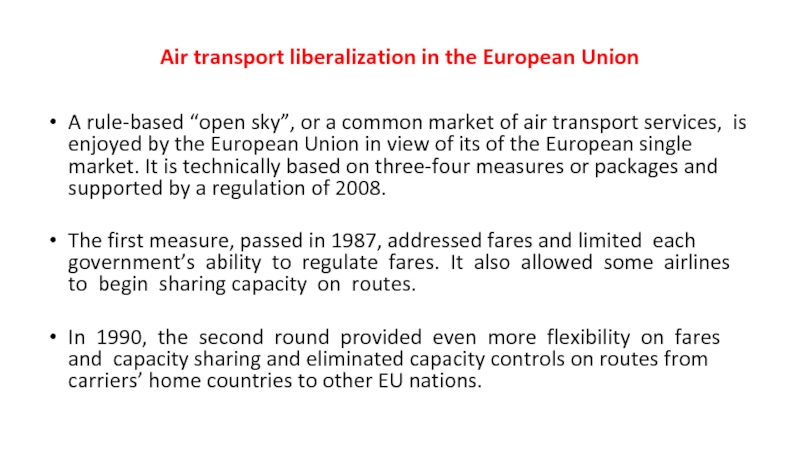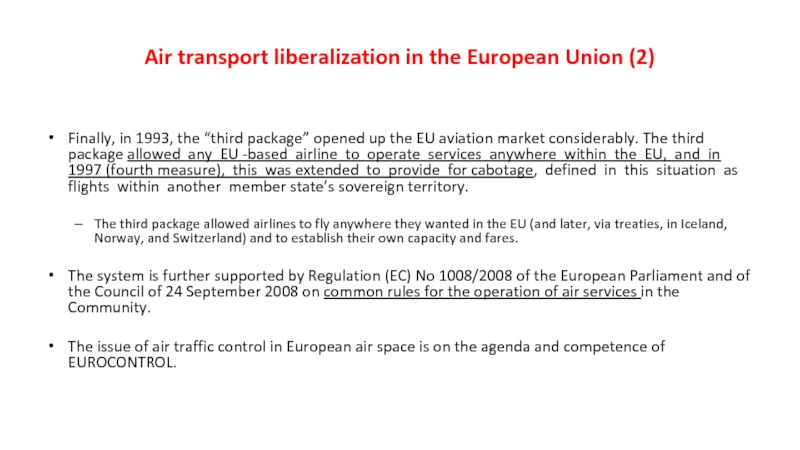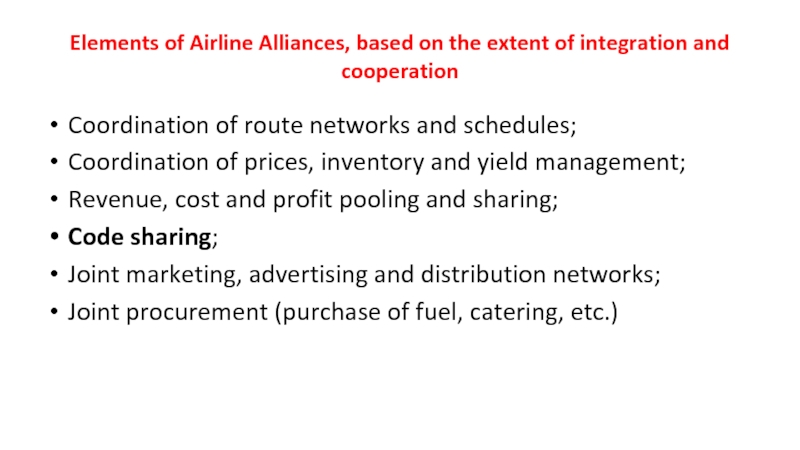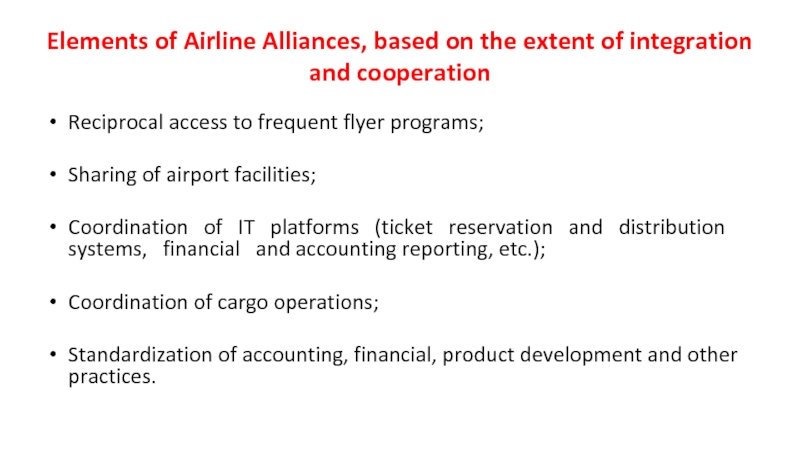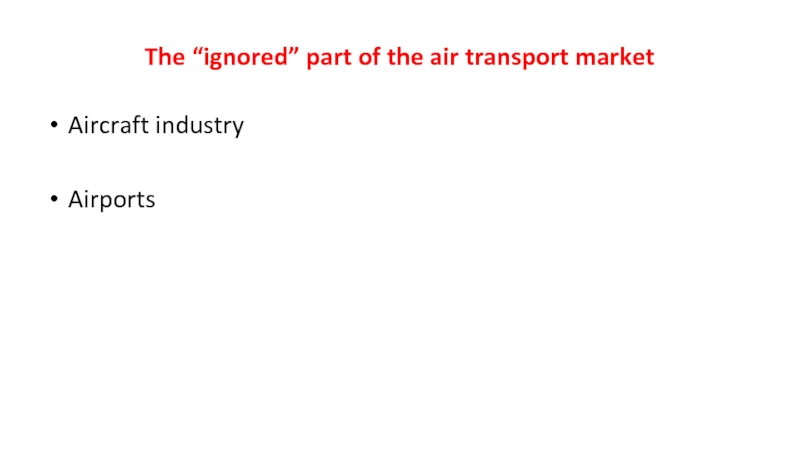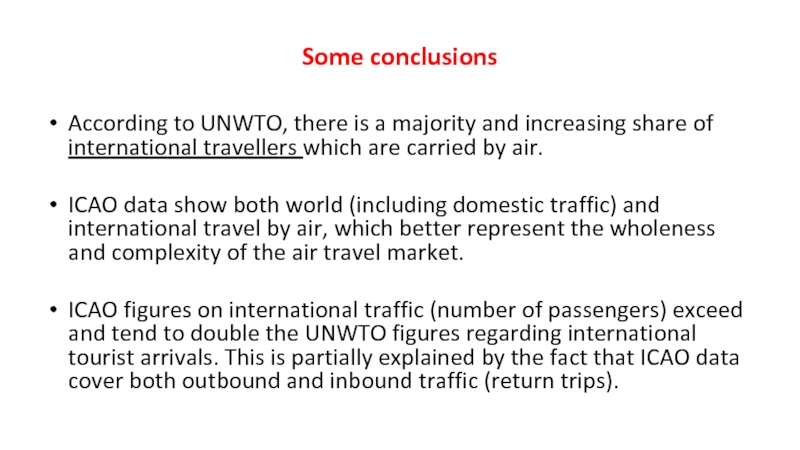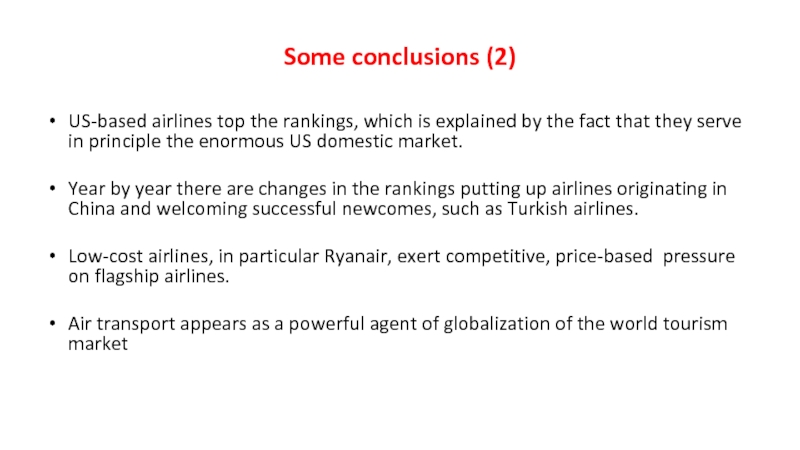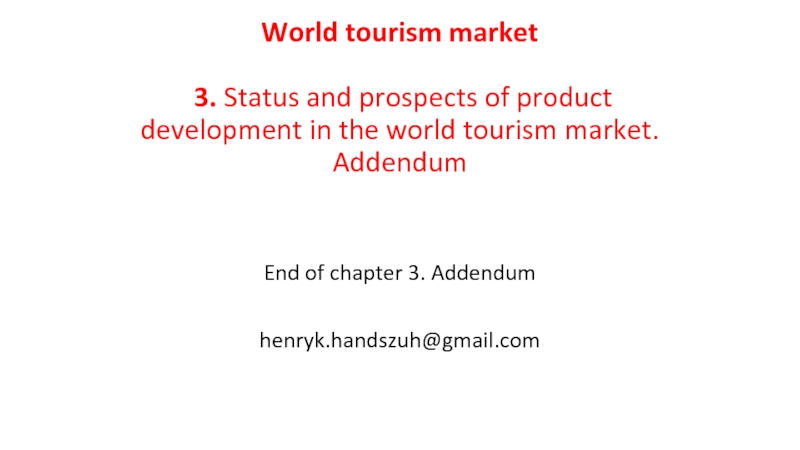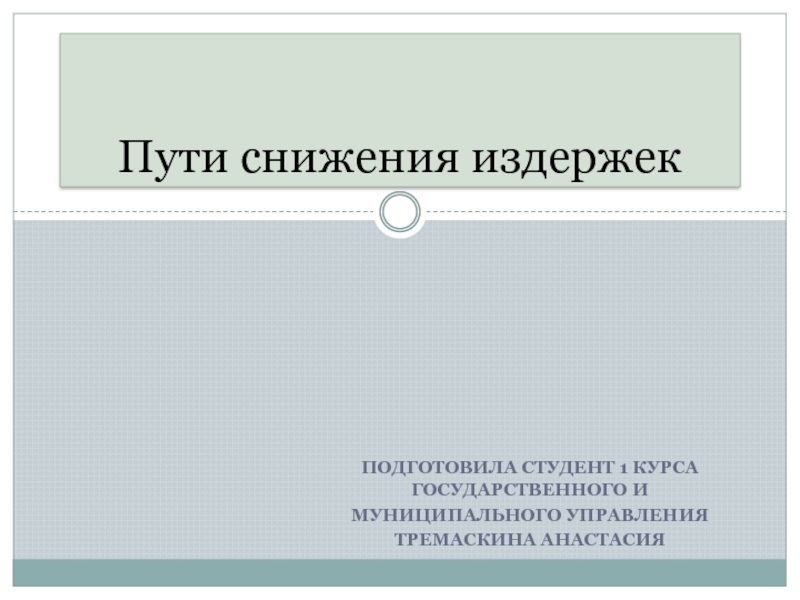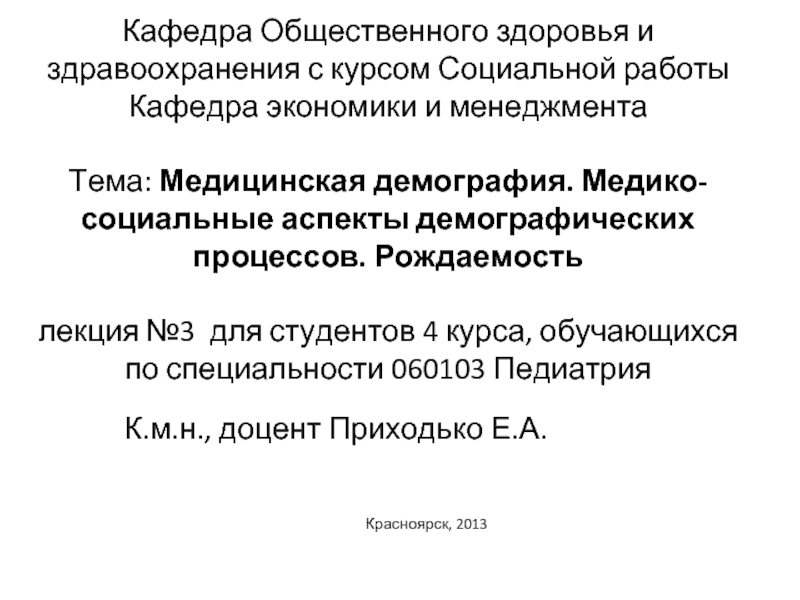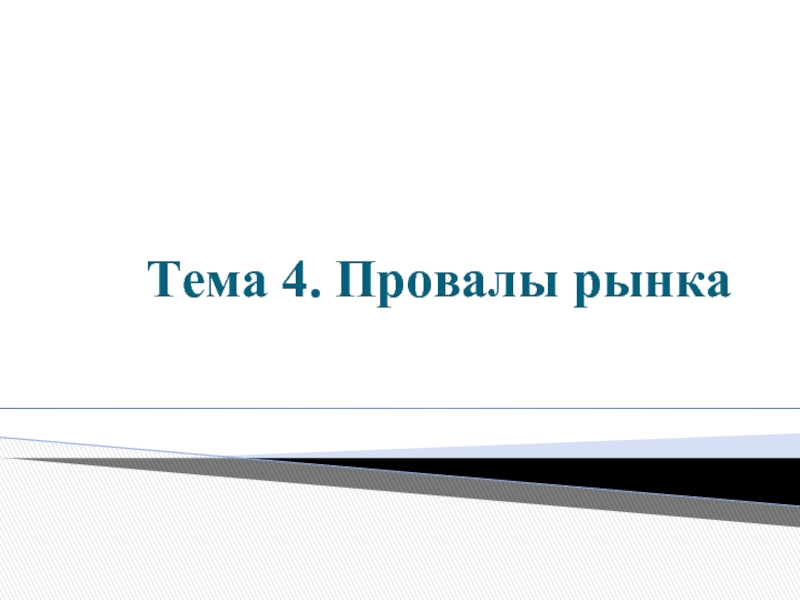Henryk F. Handszuh, M.Ec.Sc.
Former Director Market Department
World Tourism Organization (UNWTO)
Member, UNWTO Knowledge Nertwork
- Главная
- Разное
- Дизайн
- Бизнес и предпринимательство
- Аналитика
- Образование
- Развлечения
- Красота и здоровье
- Финансы
- Государство
- Путешествия
- Спорт
- Недвижимость
- Армия
- Графика
- Культурология
- Еда и кулинария
- Лингвистика
- Английский язык
- Астрономия
- Алгебра
- Биология
- География
- Детские презентации
- Информатика
- История
- Литература
- Маркетинг
- Математика
- Медицина
- Менеджмент
- Музыка
- МХК
- Немецкий язык
- ОБЖ
- Обществознание
- Окружающий мир
- Педагогика
- Русский язык
- Технология
- Физика
- Философия
- Химия
- Шаблоны, картинки для презентаций
- Экология
- Экономика
- Юриспруденция
World Tourism Market. Status and prospects of product development in the world tourism market презентация
Содержание
- 1. World Tourism Market. Status and prospects of product development in the world tourism market
- 2. Status and prospects of product development in
- 3. . Adventure travel All types
- 4. Time factor in adventure tourism Adventure
- 5. . Microadventure travel boom in Europe However,
- 6. Adventure tourism ramifications Today´s adventure travel represents
- 7. Adventure tourism ramifications (2) Adventure travel shows
- 8. Adventure travel in Asia Adventure tourism continues
- 9. The new face of adventure tourism in
- 10. Adventure tourism offers to be found everywhere
- 11. Adventure tourism and sustainability The Global
- 12. Another face of wellbeing: medical tourism. Asia
- 13. Another face of wellbeing: medical tourism Thailand
- 14. Another face of wellbeing: medical tourism. Sri
- 15. The dubious face of “fertility tourism” Fertility
- 16. The dubious face of medical tourism when
- 17. The case of suicide tourists More than
- 18. Black tourism – visting atrocity and macabre
- 19. Youth and trends in travel and tourism
- 20. Characteristics of Chinese Young Adults impacting on
- 21. World market dimension of international movements of
- 22. Tourist arrivals at national frontiers according to UNWTO. Numerical growth estimate until 2020
- 23. International tourist arrivals (2010- 2011, UNWTO data)
- 24. International tourist arrivals (2015-2016 UNWTO data) The
- 25. National destinations increasingly more diversified
- 26. Inbound tourism by month (UNWTO) Marked seasonality continues throughout years (2008 – 2011)
- 27. Inbound tourism by purpose of visit (share),
- 28. International tourism receipts First ten recipients in 2010 - 2011 (Source: UNWTO)
- 29. International tourism receipts First ten recipients in 2015 - 2016 (Source: UNWTO)
- 30. Regional shares of international tourism in 2007
- 31. International tourism market share in 2012 (UNWTO)
- 32. Regional shares of international tourism in 2016
- 33. Africa’s case: from 2007 to 2012 to
- 34. International tourist arrivals by region of origin (outbound) (million, source: UNWTO)
- 35. The international tourism market interpreted in terms
- 36. Some conclusions Developed economies, in particular EU
- 37. Some conclusions (2) The absolute volume of
- 38. Some conclusions (3) The economic, sociological and
- 39. Air Transport By Tourism Satellite Account (TSA)
- 40. Air transport (2) Air transport market
- 41. Air transport recent history and forecast
- 42. Major air carriers Source: Forbes, May 2017
- 43. Major air carriers (2) By number of
- 44. Major air carriers By number of countries
- 45. Air Transport (3) It was first deregulation,
- 46. From the Chicago convention (Convention on International
- 47. From the Chicago convention (Convention on International
- 48. The first five Freedoms of the Air
- 49. Additional freedoms of the air identified in
- 50. Nine freedoms of the air in international air transport
- 51. From the Chicago convention (Convention on International
- 52. Air transport liberalization in the European Union
- 53. Air transport liberalization in the European Union
- 54. Elements of Airline Alliances, based on the
- 55. Elements of Airline Alliances, based on the
- 56. Flight information display system code-shared flights, at Warasw Chopin Airport (photo in Wikipedia)
- 57. The international tourism market interpreted in terms
- 58. The “ignored” part of the air transport market Aircraft industry Airports
- 59. Some conclusions According to UNWTO, there is
- 60. Some conclusions (2) US-based airlines top the
- 61. World tourism market 3. Status
Слайд 1 World Tourism Market Winter semester 2017 TR – B5SE/01 3. 1. Status and prospects
Слайд 2Status and prospects of product development in the world tourism market.
Addendum
A
Adventure travel
Black tourism
Medical tourism
Youth tourism
Human dimension of the world tourism market: international movements of consumers
Passenger air transport
Слайд 3.
Adventure travel
All types of adventures can help people to cope
A rise in adventure travel today is attributed to the consumer shift away from material possessions towards an interest in actual experiences.
The adventure travel of today mirrors the past experience of original touring wilderness of the 19th century where “visitors from the areas of industrial civilization” (J. Urry) “opened their eyes and senses to the scenery, landscape, and fresh air, which so far had been hidden by terrifying wilderness” (J. Kurowicki).
Adventure travel has picked up again, in particular towards Africa, Asia and South America, as well as the Middle East – in the form of hiking.
Слайд 4Time factor in adventure tourism
Adventure tourism requires sufficient time in order
Time is becoming crucial in a world where everything moves fast, so a safari in the middle of nowhere, or a walk in a national park with loved ones is the ultimate form of wellness travel.
Time spent with love ones, including oneself, is constantly ranked as most important by respondents in surveys:
Time with partner or spouse, with children, with parents, with friends, with extended family or for myself.
Слайд 5.
Microadventure travel boom in Europe
However, many busy Europeans do not have
Sometimes known as soft adventure, these types of activities tend to be low risk and are usually achievable with minimum previous experience. They tie in with an increasing drive for healthier lifestyles.
Microadventure travel is largely practiced by those who weekly exercise (walk, hike) or participate in intensive physical activities (e.g. practicing sports, fitness).
Слайд 6Adventure tourism ramifications
Today´s adventure travel represents a dynamic resurgence of the
Travellers’ concern with health and wellness while seeking unique and authentic experiences is resulting in a demand for spiritual travel with an adventure component.
Слайд 7Adventure tourism ramifications (2)
Adventure travel shows strong linkages with cultural and
Worldwide, the activity is successfully promoted by the Adventure Travel Trade Association (ATTA) headquartered in Seattle, US. Year by year, it gets more and more adherents. Its success is explained not only by the fashion of adventure tourism, but also the ATTA ability to communicate responsible adventure tourism standards (Adventure Travel Guide Qualification and Performance Standard).
Слайд 8Adventure travel in Asia
Adventure tourism continues to be practiced largely by
Due to the reborn interest in adventure tourism and its great potential requiring travel trade governance, the Adventure Tour Operators Association of India (ATOAI) has come into being.
2015 saw its big participation for the first time in an Adventure Tourism Pavilion comprising operators specializing in adventure tourism during Outbound Travel Mart (OTM) of TTF Travel & Tourism Fair held in Mumbai.
Слайд 9The new face of adventure tourism in Africa
In Africa, this has
Typically, consumers of these types of breaks are relatively older and wealthy holidaymakers, often female, who are looking for more than just a typical African getaway.
One aim for many clients is to gain life-enhancing skills through mindful activities that can be applied to everyday life, offering a richer holiday experience.
Слайд 10Adventure tourism offers to be found everywhere
The vast majority of mindful
Other locations and activities that could match well with mindfulness holidays include exploring flora and fauna in South America, or Canada’s wild nature offering.
While current consumers are mainly international leisure holidaymakers, there is much scope to develop for “bleisure” tourists as well as diaspora and regional visitors.
Links with schools who are increasingly using mindfulness to assist students with their busy lives could also prove a successful future direction for these types of holidays.
Слайд 11Adventure tourism and sustainability
The Global Wellness Summit found that in 2014,
The mindfulness trend also combines well with travellers` increasing interest in sustainable and reduced-footprint holidays, hence ecotourism.
It helps accommodation providers offer to their guests a service which is considered a luxury.
The product of sustainable and safe adventure tourism is supported by a great body of national and international standards (ISO).
Слайд 12Another face of wellbeing: medical tourism.
Asia
Disparity in healthcare costs between developed
Asia continues to be the top medical destination in medical travel with countries such as India, Malaysia, and Thailand already being well-established medical tourism destinations.
Asian medical destinations continue to offer more and better medical procedures and care than most other medical destinations. Several hospitals in Asia have carved such outstanding reputation for themselves that medical tourism has become a major money-spinner.
Слайд 13Another face of wellbeing: medical tourism
Thailand followed by others.
The Indian
Thailand accounts for maximum share of the Asia medical tourism market, being followed by India and Singapore. South Korea stands at the fourth spot in the year 2016 and is likely to almost double its market share by the year 2022, while Malaysia is holding the last spot.
Слайд 14Another face of wellbeing: medical tourism.
Sri lanka
Sri Lanka is amongst
Medical tourism (not only ayerveda) is only at a nascent stage in Sri Lanka; factors such as cost competitiveness, a booming private healthcare industry, internationally trained workers, and so on should help the development of Sri Lanka's medical tourism industry.
Слайд 15The dubious face of “fertility tourism”
Fertility Tourism is a global tourism
For the right price, people can buy IVF treatments, donated eggs and sperm along with surrogate mother. The clients are often white and rich. The suppliers pressed into service are often neither.
Based on the UN`s definition of human trafficking, fertility tourism often results in human trafficking by recrcuiting people by coerción, twisting power and vulnerability and given payments that result in physical exploitation.
Слайд 16The dubious face of medical tourism when it comes to transplants
The
Typical fees offered, by countries:
South Africa - USD 700
India - USD 1000
Egypt - USD 2000
Moldova - USD 2700
Turkey - USD 10 000
US - USD 30 000
Data by Coalition for Organ-Failure Solutions (USA, Egypt)
Слайд 17The case of suicide tourists
More than 600 people travelled to Switzerland
Assisted dying clinics can operate legally in Switzerland, and have attracted large number of people with terminal illnesses and debilitating medical condition, with neurological conditions the most common reason for seking euthanasia, followed by cancer and rheumatic diseases.
The rise of suicide tourism has been a major factor in prompting debates over the ethics of euthanasia.
Слайд 18Black tourism – visting atrocity and macabre sites
As travellers embrace experiences,
The former Nazi extermination camp Auschwitz (UNESCO World Heritage of 1978) heads the list.
Torture museums have been commonplace for some time
The Salem Bitch Museum (Massachusetts, US)
New spectacular additions include Cambodia`s Killing Fields, Chernobyl (CHERNOBYL.wel.come – enjoy Chernobyl, die later), Fukushima Dai-ichi nuclear power plant.
There is an Institute for Dark Tourism Research at the University of Central Lancashire. Death sells.
Слайд 19Youth and trends in travel and tourism
Human progress has always, through
In tourism, youth is the principal agent of change and innovation among other generational segments.
Inasmuch as youth represents the future in general, it equally represents the future of tourism.
It is hence the principal trendsetter of tourism.
Слайд 20Characteristics of Chinese Young Adults impacting on tourism (Source: The power
Слайд 21World market dimension of international movements of people
Unstopable and growing trend
Principal protagonists and beneficiaries of international tourism.
Regional diversification in distribution and trends.
Some conclusions.
Слайд 22Tourist arrivals at national frontiers according to UNWTO. Numerical growth estimate
Слайд 23International tourist arrivals (2010- 2011, UNWTO data) The first 10 actors of
Слайд 24International tourist arrivals (2015-2016 UNWTO data) The first 10 actors of globalization
Слайд 26Inbound tourism by month (UNWTO)
Marked seasonality continues throughout years (2008 –
Слайд 27Inbound tourism by purpose of visit (share), 2016
Source: UNWTO
Leisure, recreation
and holidays
51%
VRF,
religion, other
27%
Business and
professional
15%
Not specified 7%
Слайд 30Regional shares of international tourism in 2007
Arrivals, receipts and market share
Americas
ITA: 142 million (16%)
ITR: US$ 171 billion (20%)
Africa
ITA: 44 million (5%)
ITR: US$ 28 billion (3%)
Europe
ITA: 484 million (54%)
ITR: US$ 433 billion (51%)
Middle East
ITA: 46 million (5%)
ITR: US$ 34 bn (4%)
Asia and the Pacific
ITA: 184 million (20%)
ITR: US$ 189 billion (22%)
UNWTO Market Department - Market Trends, Competitiveness and Trade in Tourism Services
Слайд 32Regional shares of international tourism in 2016
Arrivals, receipts and market share
Americas
ITA: 200 million (16%)
ITR: US$ 313 billion (26%)
Africa
ITA: 58 million (5%)
ITR: US$ 35 billion (3%)
Europe
ITA: 615 million (50%)
ITR: US$ 447 billion (37%)
Middle East
ITA: 54million (4%)
ITR: US$ 34 bn (5%)
Asia and the Pacific
ITA: 308 million (25%)
ITR: US$ 367 billion (30%)
UNWTO Market Department - Market Trends, Competitiveness and Trade in Tourism Services
Слайд 33Africa’s case: from 2007 to 2012 to 2030 - conveying an
Слайд 35The international tourism market interpreted in terms of connecting transport links.
Air
55%
Road
39%
Rail 2%
Water 4%
Слайд 36Some conclusions
Developed economies, in particular EU countries and „Neo – Europe”
Diversification of main tourism destinations, as well as travel generating regions, with respect to ranking, is also taking place.
Numerical growth of trips considered international picked up after 1990 due to the fragmentation of states (USSR, Yugoslavia, Czechoslovakia).
The share of Europe and the Americas in international travel is being reduced in favour of Asia (in particular due to China).
Слайд 37Some conclusions (2)
The absolute volume of traffic, both inbound and outbound,
There is a majority and increasing share of international travellers carried by air.
Africa`s share in international tourism, in terms of arrivals (inbound), departures (outbound) and receipts, remains low and stagnant.
Слайд 38Some conclusions (3)
The economic, sociological and environmental value of international tourism
From the demand side, world or global tourism is a combination of both international and domestic movements of people or consumers.
Short-distance travel among European countries is reported as international; long-distance travel between mainland US and its Pacific states and islands is reported domestic; trips within China, but to its territories (Macau, Hong Kong) is reported as international.
Environmental impact of air, road and maritime transport carrying passengers, hence tourists, does not respect administrative or political borders, hence travel considered domestic should be included, as a rule, in the count of world tourism.
Слайд 39Air Transport
By Tourism Satellite Account (TSA) definition, passenger air transport is
Increasing transport of passengers as consumers or tourists in the broad sense of the term (including domestic flights and consumption abroad in both ways: outbound and inbound),
as well as
Increasing carriage of goods (cargo) and mail.
Air transport is also globalizing or integrating within its own ranks
.
The global market is both a platform of both fierce competition and cooperation among world airlines.
Слайд 40Air transport (2)
Air transport market globalization by means of, and within,
Expansion of air carriers destinations
Broadening the outreach of open skies
Mergers of air carriers, to form transnational companies (eg. British Airways and Iberia)
Alliances of varying scope of integration and cooperation (such as codesharing)
Слайд 42Major air carriers
Source: Forbes, May 2017
By revenue (billion USD)
American Airlines Group(40.99)
Delta
United Continental Holdings (37.5)
Lufthansa Group (35.5)
Air France – KLM (28.9)
International Airlines Group (BA+Iberia) (25.3)
Southwest Airlines (20.2)
China Southern Airlines (17.7)
China Eastern Airlines (14.9)
All Nippon Airways (14.7)
By passengers carried (million)
American Airlines (198.7)
Delta Air Lines (183.7)
Southwest Airlines (151.8)
United Airlines (143.2)
Ryanair (119.8)
China Southern Airlines (84.9)
China Eastern Airlines (80.9)
Turkish Airlines (62.8)
easyJet (73.1)
Lufthansa (62.4)
Слайд 43Major air carriers (2)
By number of airports served (2013):
United Airlines –
Grupa American Airlines – 344
Delta Airlines – 333
Turkish Airlines – 274
Lufthansa – 218
British Airways – 212
China Eastern Airlines – 217
Air Canada – 194
Air France – 191
China Southern Airlines (190)
Слайд 44Major air carriers
By number of countries served (2016):
1. Turkish
2 Lufthansa, Germany 83
3 Air France, France 78
3 British Airways, United Kingdom 78
5 Qatar Airways Qatar 73
6 Delta Air Lines, United States 71
7 Emirates, United Arab Emirates 70
8 KLM, Netherlands 66
8 Egyptair, Egypt 66
10 United Airlines, United States 60
Слайд 45Air Transport (3)
It was first deregulation, leading to liberalization of air
At the time, it was an international NGO, IATA (International Air Transport Association) which played a role of commercial regulator settling accounts (bank settlement plan) for air carriers belonging to the association. It was therefore considered a sort of an air carriers` cartel. It did not deal, however, with the issues of “freedoms of the air” conducive to globalization.
Слайд 46From the Chicago convention (Convention on International Civil Aviation) to the
The Chicago convention (1944) provides that “every State has complete and exclusive sovereignty over the airspace above its territory”.
Attached to the Chicago Convention is the International Air Services Transport Agreement (IASTA) which provides for five freedoms in the air also called traffic rights.
Said freedoms are not tacitly available to the signatories of the Chicago convention, but they need to be negotiated by means of bilateral air agreements between governments of two countries on behalf of the air carriers established in their territories.
Traffic rights are not covered by the General Agreement on Trade in Services (GATS) of 1995 of the World Trade Organization (WTO), even though GATS deals with air transport services, but these are limited only to the services suppied in airports and to aircraft.
Слайд 47From the Chicago convention (Convention on International Civil Aviation) to the
The ability to make use of all the freedoms of the air would amount to an entirely open sky, hence a global air transport market.
In practice every country engages on behalf of its carriers in bilateral air transport agreements (also called air service agreements, ASAs) agreements of varying coverage.
According to ICAO, in October 2012 there were as many as 400 such agreements with 145 countries involved.
Слайд 48The first five Freedoms of the Air referred to in IASTA
First Freedom of the Air - the right or privilege, in respect of scheduled international air services, granted by one State to another State or States to fly across its territory without landing
Second Freedom of the Air - the right or privilege, in respect of scheduled international air services, granted by one State to another State or States to land in its territory for non-traffic purposes
Third Freedom of The Air - the right or privilege, in respect of scheduled international air services, granted by one State to another State to put down, in the territory of the first State, traffic coming from the home State of the carrier
Fourth Freedom of The Air - the right or privilege, in respect of scheduled international air services, granted by one State to another State to take on, in the territory of the first State, traffic destined for the home State of the carrier.
Fifth Freedom of The Air - the right or privilege, in respect of scheduled international air services, granted by one State to another State to put down and to take on, in the territory of the first State, traffic coming from or destined to a third State
Слайд 49Additional freedoms of the air identified in ASAs
Sixth Freedom of
Seventh Freedom of The Air - the right or privilege, in respect of scheduled international air services, granted by one State to another State, of transporting traffic between the territory of the granting State and any third State with no requirement to include on such operation any point in the territory of the recipient State, i.e. the service need not connect to or be an extension of any service to/from the home State of the carrier.
Eighth Freedom of The Air - the right or privilege, in respect of scheduled international air services, of transporting cabotage traffic between two points in the territory of the granting State on a service which originates or terminates in the home country of the foreign carrier or (in connection with the Seventh Freedom of the Air) outside the territory of the granting State (also known as a “consecutive cabotage”).
Ninth Freedom of The Air - the right or privilege of transporting cabotage traffic of the granting State on a service performed entirely within the territory of the granting State (also known as a “stand alone "cabotage”).
Слайд 51From the Chicago convention (Convention on International Civil Aviation) to the
A rule-based “open sky”, or a common market of air transport services, is enjoyed by the European Union in view of its single European market.
The rule of open skies is gradually introduced between the European Union and other areas, including USA.
The current arrengement in place is considered asymetric: it concedes more rights to US carriers at the expense of the European ones.
Allowing Norwegian flights in USA was problematic.
Слайд 52Air transport liberalization in the European Union
A rule-based “open sky”, or
The first measure, passed in 1987, addressed fares and limited each government’s ability to regulate fares. It also allowed some airlines to begin sharing capacity on routes.
In 1990, the second round provided even more flexibility on fares and capacity sharing and eliminated capacity controls on routes from carriers’ home countries to other EU nations.
Слайд 53Air transport liberalization in the European Union (2)
Finally, in 1993,
The third package allowed airlines to fly anywhere they wanted in the EU (and later, via treaties, in Iceland, Norway, and Switzerland) and to establish their own capacity and fares.
The system is further supported by Regulation (EC) No 1008/2008 of the European Parliament and of the Council of 24 September 2008 on common rules for the operation of air services in the Community.
The issue of air traffic control in European air space is on the agenda and competence of EUROCONTROL.
Слайд 54Elements of Airline Alliances, based on the extent of integration and
Coordination of route networks and schedules;
Coordination of prices, inventory and yield management;
Revenue, cost and profit pooling and sharing;
Code sharing;
Joint marketing, advertising and distribution networks;
Joint procurement (purchase of fuel, catering, etc.)
Слайд 55Elements of Airline Alliances, based on the extent of integration and
Reciprocal access to frequent flyer programs;
Sharing of airport facilities;
Coordination of IT platforms (ticket reservation and distribution systems, financial and accounting reporting, etc.);
Coordination of cargo operations;
Standardization of accounting, financial, product development and other practices.
Слайд 56Flight information display system code-shared flights, at Warasw Chopin Airport (photo
Слайд 57The international tourism market interpreted in terms of connecting transport links.
Air
55%
Road
39%
Rail 2%
Water 4%
Слайд 59Some conclusions
According to UNWTO, there is a majority and increasing share
ICAO data show both world (including domestic traffic) and international travel by air, which better represent the wholeness and complexity of the air travel market.
ICAO figures on international traffic (number of passengers) exceed and tend to double the UNWTO figures regarding international tourist arrivals. This is partially explained by the fact that ICAO data cover both outbound and inbound traffic (return trips).
Слайд 60Some conclusions (2)
US-based airlines top the rankings, which is explained by
Year by year there are changes in the rankings putting up airlines originating in China and welcoming successful newcomes, such as Turkish airlines.
Low-cost airlines, in particular Ryanair, exert competitive, price-based pressure on flagship airlines.
Air transport appears as a powerful agent of globalization of the world tourism market
Слайд 61World tourism market 3. Status and prospects of product development in
End of chapter 3. Addendum
henryk.handszuh@gmail.com
